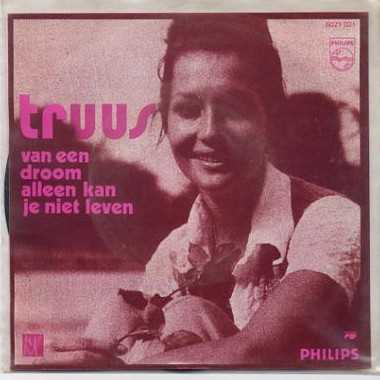
She learned that acting didn't just mean showing emotions and moving about, but demanded that she concentrate on staying within chalk marks on the floor so as not to stray outside the range of the lights or the camera's focus. Mabuse the Gambler and Die Nibelungen) and all the grips, riggers, plasterers, cable bashers, and set dressers bustling about their jobs. She watched cameraman Carl Hoffmann (who had lit big hits like Dr. Truus had to quickly get used to being made up and going through wardrobe, then finding her place on the sets.

Fritsch was very well known and handsome, and Truus fell in love with him on the spot. Truus met the other members of the cast - her six "sisters" (including English actress Betty Balfour) and Willy Fritsch as Count Horkay. There were plasterers' workshops, carpentry shops, prop stores, hair and wardrobe departments, and publicity offices planning the release of completed movies (Ufa ran 3,000 cinemas, admitting nearly a million people a day). Like its counterparts in California, Rome and New York, Ufa was a factory - scripts were being written, scenes were being shot in big, barn-like studios, editors assembled printed footage in cuttingrooms. She was funny, it shone through, and she got the job. When the director watched the tests, one girl stood out - where everyone else had gazed into the lens with expressions of the deepest sincerity, this one hadn't been able to repress a laugh. They were all older than Truus, and she could see she hadn't a hope. Truus had never had an acting lesson in her life, and was certain she'd be sent home at once One after the other, the girls were filmed. Not long after, she was summoned to the German capital for an audition - along with two hundred other girls.
#TRUUS DAMMEN MOVIE#
In 1926, Truus entered a beauty competition in a Dutch magazine - if she won she'd have the chance to audition for a part in a real movie in Berlin.

She passionately wanted to be a movie actress, but very few films were made in the Netherlands at the time. Truus found a job with a milliner after school, then trained as a salesgirl at a fashion store in Amsterdam. Using her connections, Truus Wijsmuller was able to pull off unbelievable transport: that of 74 children who she got out of the Burgerweeshuis in Amsterdam just in time to take them to the harbor of IJmuiden, where they embarked on the ship SS Bodegraven the very same time Holland capitulated to the German occupier on May 15, 1940.Van Aalten was born on August 2, 1910, in Arnhem in family of a pharmacist. Truus Wijsmuller, in other words, played an essential role in getting the permissions for the Kinder transports and in organising and guiding these transports.


The Germans who negotiated with Truus Wijsmuller in Berlin and Vienna about allowing the children to leave the country, often were impressed by her courage and the boldness she used to get the desired permissions for the children. Not only the children stand in awe for this umbrella. This umbrella was her identification mark, that she used while waiting for ‘her’ children at the border station in Emmerich, before she would get them to Holland. They were sent on these trains by their parents, grandparents or other family members, with no more than a small bag – the older children often in charge of looking after their younger brothers and sisters and sometimes (even though it was against the official rules) clutching a baby in their arms.įor these children Truus Wijsmuller became ‘The woman carrying an umbrella’. Until World War II officially started in May 1940, a total of around 10.000 children were saved this way. It became one of the first ‘Kinder transports’ that would take children from Vienna, Germany, Prague and Poland to Holland and England. She personally negotiated with the Germans, met with Adolf Eichmann in Vienna and when he ‘offered’ (challenged) her to organise a transport in a few days, gathering 600 Jewish children – without their parents – to leave Germany by train, she surprised him by indeed getting almost that big of a group together to be transported to safer parts of Europe. Truus Wijsmuller (1896-1978) was an ‘ordinary’ woman, who came into action when the lives of Jewish children were no longer protected and safe in many European countries after the Night of Broken Glass ('Kristall Nacht') on November 9/10, 1938.


 0 kommentar(er)
0 kommentar(er)
